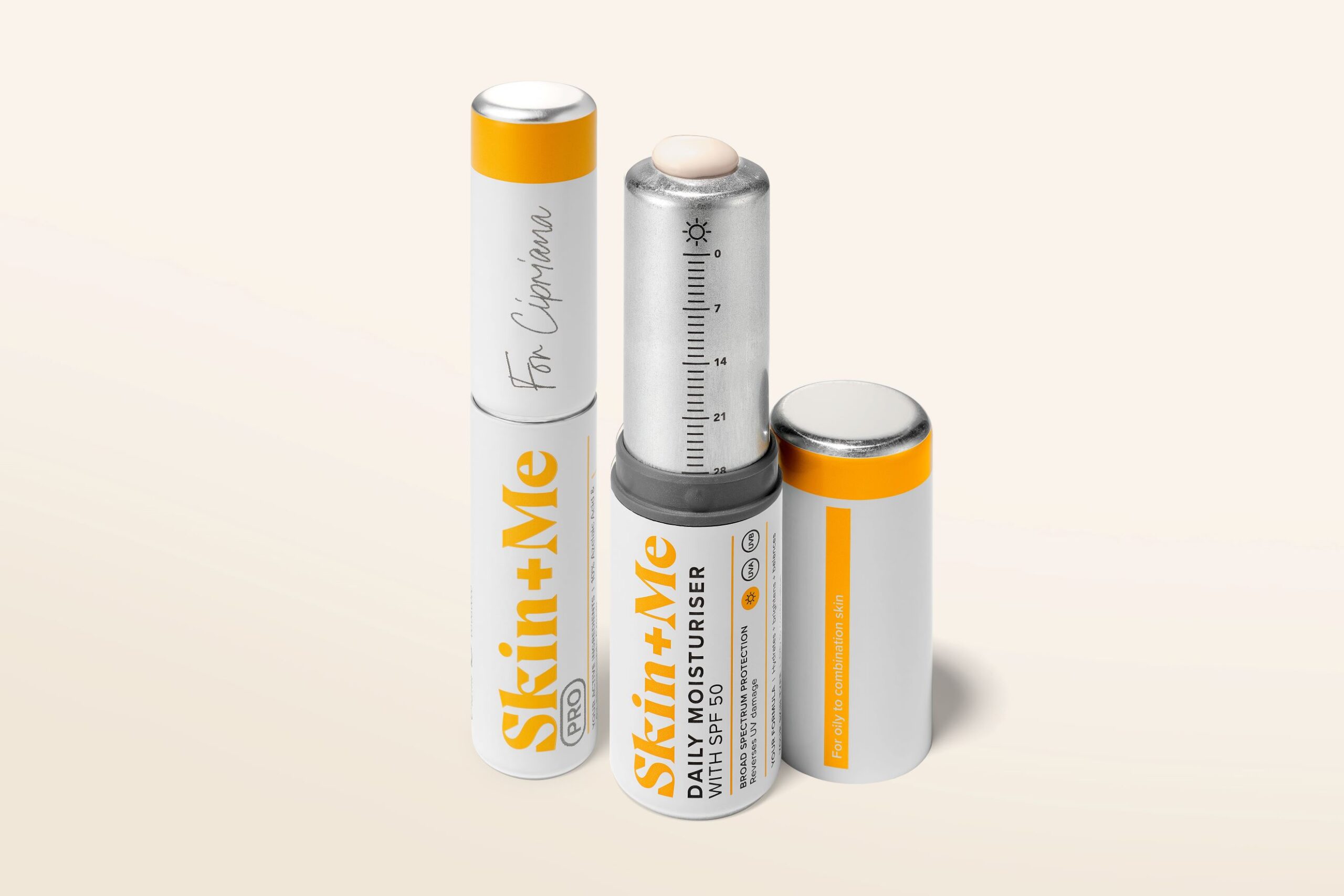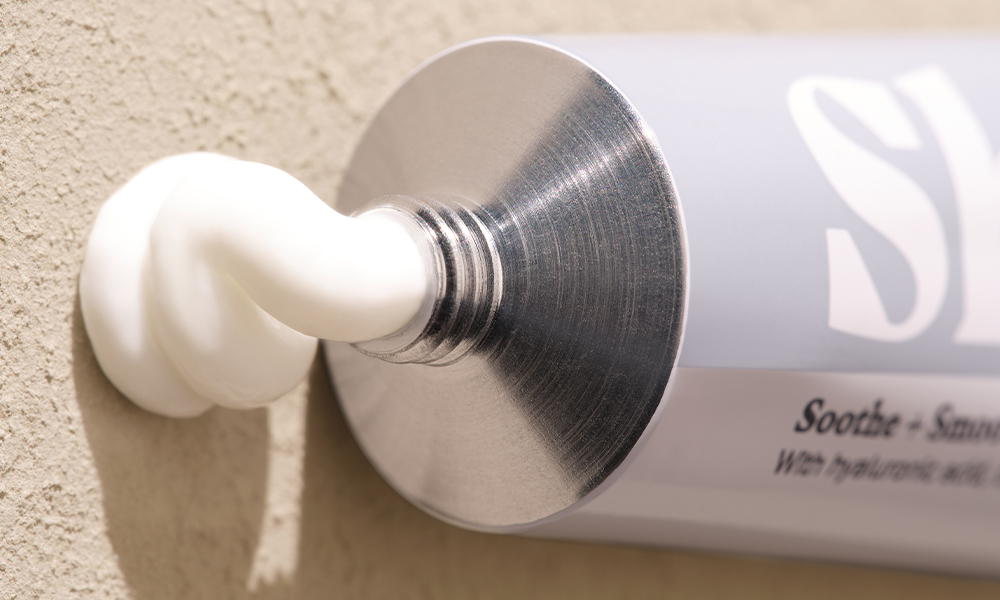Meet the Daily Moisturiser that guarantees SPF 50 – with every click

Link to share article here:
Ask A Dermatologist: Single-ingredient vs combination blended skincare
As simple as it sounds, single-ingredient skincare is a term with no industry-standard definition. Here we’re using it as a term for products containing a single hero active ingredient.
A growing trend is plumping for single-ingredient products as a transparent way to mix and layer ingredients that work for you. There’s a slight risk when mixing ingredients that the dose of ingredients layered may be too high creating an unwanted reaction. There’s also the chance that blending off-the-shelf products that don’t compliment each other, may render them ineffective. Put it this way, a fair helping of cosmetic and chemistry knowledge is needed to navigate single-ingredient skincare.
Consumers learning more about what’s in their skincare is a good thing. But while searches for key active ingredient terms such as tretinoin and niacinamide have risen in recent years, over-the-counter products that consumers layer themselves like a cocktail throw up a minefield of options which ultimately comes down to individual trial and error.
A fair helping of cosmetic and chemistry knowledge is needed to navigate single-ingredient skincare.
We asked our Consultant Dermatologist, Dr Malvina Cunningham and Head of Medical, Dr Jason Thomson for their expert take on single-ingredient skincare, blended skincare and the ingredients that work best together.
Skin + Me: Can you make a case for single-ingredient treatments vs. combination or blended skincare?
Dr Malvina Cunningham: If you want the benefits of a number of different ingredients, I would always recommend a well-formulated product that contains all the required actives in one. This way, you can ensure the ingredients work well together and are formulated for optimal function and absorption.
This is better than applying ingredients one by one when you potentially compromise their effectiveness and absorption, without knowledge of how the different ingredients in products interact with each other.
Skin + Me: Do some ingredients work better together?
Dr Malvina Cunningham: Vitamin C and retinoids work well together as they both promote collagen production and enhance each other’s effect. When your skin can tolerate retinoids well, you can add vitamin C to your routine.
Niacinamide and retinoids work well because niacinamide is a B vitamin that helps repair DNA and control inflammation. This counteracts some of the irritating effects that retinoids can have on the skin. The two make perfect partners when it comes to tackling acne or signs of ageing.
“Identify your concern and go for the active ingredient that has the best evidence in addressing that concern.”
Skin + Me: What ingredients should we avoid mixing?
Dr Malvina Cunningham: This depends on your skin type and sensitivity. What is irritating for some is not for others. As a general rule, find the one ingredient that’s most beneficial for your concern and focus on adding that to your routine. If you introduce retinoids into your routine try and stay away from other irritant ingredients such as acids at least at the start. Some people will be able to tolerate them easily once established.
This is also the case for azelaic acid and retinoids. There can be irritation if both are used and started at high concentration together, but if integrated one by one and at gentle concentrations, they can be used together very well.
Skin + Me: Do you have any other tips on this?
Dr Malvina Cunningham: Identify your concern and go for the active ingredient that has the best evidence in addressing that concern. Begin with that, build your routine around it and then gradually introduce additional steps if needed or wanted. There isn’t a strict rule for everyone as everyone has different skin with different needs. A case-by-case, personalised approach is best. If you have sensitive skin, start one product after the other rather than all at once so that you know what you are reacting to.
Skin + Me: What’s your take on using one active ingredient at a time when it comes to specific skin concerns?
Dr Jason Thomson: Identify what you’re trying to achieve. If you want to treat fine lines and prevent photo-ageing, in addition to the essential sunscreen, you’re probably going to want a retinoid in the evening and vitamin C in the morning. You can get products with these single active ingredients but often when combined with other ingredients, the effects can be better. For example ferulic acid is also an antioxidant, like vitamin C, but when formulated together this helps to stabilise vitamin C so it lasts longer and can be more effective in protecting the skin from free radicals and improving hyperpigmentation.
Niacinamide is an ingredient often formulated with retinoids and helps you tolerate the treatment better and maintain the skin barrier. The trend that companies like The Ordinary have sparked, where people use multiple single-ingredient products and layer them up is not necessary as you can often get all the ingredients you need in a single product. You run the risk of irritating your skin and skin sensitivity if you get this wrong and knowing how these different ingredients and different formulations interact and affect each other is almost impossible unless you’re a formulation scientist!
I normally advise against combining active ingredients that can be irritating such as retinoids, and acids as you’re going to increase your chances of developing side effects. I advise to use the minimum number of active ingredients that give you benefit so you don’t risk irritation and sensitivity. But there are ways of incorporating powerful active ingredients into your routine and the key is to go slowly and gradually build up tolerance. Always listen to your skin and stop if you start developing any signs of irritation or sensitivity.
“I advise to use the minimum number of active ingredients that give you benefit so you don’t risk irritation and sensitivity.”
For example start your retinoid in the evening and once you’re tolerating this well, you can then introduce Vitamin C in the morning a few times a week and gradually build up frequency as tolerated – or microdose and go for a lower strength at first until you’re tolerating it. Everyone’s skin is different and some people will find they’ll be able to tolerate higher strengths from the beginning and add in multiple actives. I always advise exercising caution and sticking to the essentials to help you get the most from your skincare routine.
The takeaway?
It’s always great to stay informed about product innovations and learn more about what’s in your beauty and skincare products. Whether that’s to check that they’re sustainable, vegan and cruelty-free or to understand the provenance and origin of specific ingredients and what works for you.
Combining ingredients, when done right, can have great benefits. The quickest route to getting it right? A personalised blend of ingredients – at the right dose – takes the guesswork out of finding active ingredients that work to meet your skincare needs.
Dr Jason Thomson summarises, “Combining ingredients is a great way to boost the effects of your skincare, whether that’s to improve breakouts and acne, target hyperpigmentation or achieve glowing skin.”
Medical facts checked by Consultant Dermatologist, Dr Malvina Cunningham.
New to Skin + Me? Get your first month of personalised skincare for £4.99 with promo code DOSE – complete our quick consultation here.
Looking for a routine refresh? Add the Dream Routine to your Skin + Me subscription.
In need of a restock? Head to The Skincare Shop for one-off purchases of your Routine Essentials.



